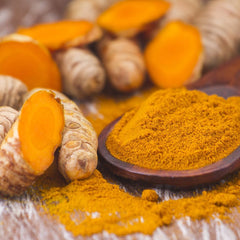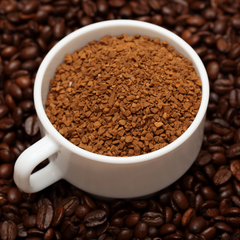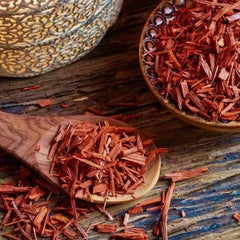What Does "Spray" Mean in Perfume?
Click For Affordable Inspired Perfume Alternatives
In the context of perfumes, the term "spray" refers to the method by which the fragrance is applied to the skin. It involves a mechanical dispersion of the fragrance through a nozzle, which releases the liquid perfume in a fine mist. The "spray" is one of the most common and convenient ways of applying perfume today, offering users an easy and hygienic way to enjoy their favorite scents.
1. The Mechanism Behind the Spray
A perfume spray usually consists of a bottle with a sprayer nozzle, a pump, and a tube that runs to the bottom of the perfume container. When the user presses down on the pump, it creates pressure that forces the liquid perfume through the nozzle, which atomizes the liquid into tiny droplets. These droplets are dispersed into the air and settle on the skin, clothing, or hair, leaving behind the scent.
-
Atomizer Function: The spray mechanism relies on an atomizer (the nozzle), which breaks the perfume into tiny molecules, creating a fine mist. This allows the fragrance to be evenly distributed and enhances the longevity and projection of the scent.
2. Benefits of Spray Application
There are several advantages to using a spray method to apply perfume, including:
-
Even Distribution: Spraying perfume ensures an even and consistent distribution of the fragrance. The fine mist helps to cover a larger surface area, making it more efficient than dabbing or pouring perfume onto the skin.
-
Convenience: Spray perfumes are simple to use, and they do not require direct contact with the skin. This makes it more hygienic, particularly when sharing scents or when applying fragrance on-the-go.
-
Controlled Usage: With a spray, users can control the amount of perfume applied, making it easier to achieve the desired strength without over-applying or wasting the fragrance.
-
Less Mess: Unlike roll-ons or splash bottles, spray bottles help avoid direct contact with the fragrance liquid, keeping the bottle and skin cleaner.
-
Quick and Discreet Application: Spraying allows for a quick, discreet, and efficient application, especially in situations where you might not have time to apply perfume more carefully, such as during travel or a busy day.
3. Spray and Different Types of Perfume Bottles
The spray method is typically associated with certain types of perfume packaging, where the fragrance is contained in a bottle designed for misting. This includes:
-
Eau de Parfum (EDP) and Eau de Toilette (EDT) Bottles: These bottles generally feature a spray nozzle, as these fragrance types are used more frequently, and spraying provides a quicker application method.
-
Perfume Atomizers: Smaller, portable versions of spray bottles, atomizers are designed for travel. These are refillable and typically come with a smaller spray nozzle that disperses the fragrance in a fine mist.
-
Luxury and Designer Bottles: High-end fragrances, particularly those from luxury brands, often come in decorative spray bottles that enhance the visual appeal of the fragrance while offering the convenience of the spray application.
4. Types of Sprayers
There are different types of spray nozzles and sprayers used in perfume bottles:
-
Traditional Spray Nozzle: The most common type, where a pump mechanism releases the liquid perfume in a fine mist when pressed.
-
Pressurized Spray: These bottles use a pressurized mechanism to deliver a stronger mist of fragrance, offering a more substantial application in a shorter amount of time.
-
Continuous Spray (Atomizer): A sprayer that releases a constant, fine mist with a continuous press, allowing for a more even and sustained distribution of the fragrance over a larger area. These sprays are popular for larger bottles.
-
Misting Spray (Mist Atomizer): A soft, fine mist that covers a larger surface area in one or two quick bursts, typically found in perfumes with a lighter or fresher composition.
5. Spray and Fragrance Longevity
The application method can influence how long a fragrance lasts on the skin. While spraying perfume might seem like it disperses the scent more quickly, it also allows the fragrance to envelop the skin and hair more evenly, which can contribute to better projection and potentially a longer-lasting scent.
-
Fine Mist for Subtlety: The fine mist of a spray tends to evaporate faster, but it disperses the fragrance molecules more widely, which can enhance the overall experience of the scent as it travels through the air.
-
Scent Diffusion: Spraying perfume on pulse points such as the wrists, neck, or behind the ears allows the scent to diffuse more effectively as these areas naturally radiate heat, helping the perfume develop and project over time.
6. Common Usage of "Spray" in Perfume Terminology
-
Spray Bottles: Many modern perfumes come in spray bottles, making it easy to apply the fragrance without the need to open the bottle and pour or dab it onto the skin.
-
"Spray" as a Verb: The term "spray" is often used as a verb to describe the action of applying the fragrance. For example, someone may say, "I will spray my perfume" or "He sprayed on too much fragrance."
-
Spray vs. Splash: A spray bottle is often contrasted with a splash bottle, which typically requires users to pour or dab the fragrance onto their skin. The spray bottle offers more convenience, precision, and hygiene compared to splash bottles.
7. How to Use a Perfume Spray Effectively
To get the best out of your perfume spray, it’s important to apply it properly:
-
Hold the Bottle Correctly: Hold the bottle about 6–8 inches (15–20 cm) away from the skin. This ensures the fine mist is evenly distributed.
-
Spray on Pulse Points: Apply perfume to pulse points like the neck, wrist, behind the ears, and on the inner elbows. These areas emit heat, helping the fragrance develop and last longer.
-
Don’t Overdo It: A couple of spritzes are usually enough to leave a noticeable scent. Over-applying can lead to an overwhelming fragrance cloud.
-
Avoid Rubbing: Don’t rub your wrists together after spraying perfume. This can crush the fragrance molecules and change the scent. Simply let the perfume dry naturally.
8. Spray and Fragrance Categories
The spray method is common across all fragrance concentrations, from eau de toilette (EDT) to extrait de parfum. However, the concentration of the fragrance in the spray bottle can affect how strong the scent is:
-
Eau de Parfum (EDP) and Eau de Toilette (EDT): These fragrances are typically designed to be applied using a spray, with EDP being a more concentrated form that will last longer, and EDT being a lighter, fresher option.
-
Extrait de Parfum: Although this is a more concentrated version of perfume, it is sometimes sold in spray bottles for easier application, although it is often used in smaller amounts due to its potency.
In Conclusion
"Spray" in perfume refers to the method of applying fragrance through a nozzle that disperses the liquid into a fine mist. This application method is popular for its convenience, ability to evenly distribute the fragrance, and hygienic nature. With a wide range of spray types, from traditional nozzles to continuous misting sprayers, this method enhances the experience of wearing perfume. It is an essential part of modern perfume packaging, ensuring both easy use and effective scent projection. Whether you’re using a luxury fragrance, an eau de toilette, or a niche perfume, the spray method is likely the preferred choice for efficient and controlled fragrance application.
Buy Perfumes - Best Online Retailers
Click For Affordable Inspired Perfume Alternatives
Click For The Best Niche Perfumes & Decants
Pheromone Perfumes - Confidence, Attraction & Appeal - Click For More
Home Fragrances & Candle Warmers - Click To Scent Up Your Spaces Today!



